Plastic Models + VB Suite: New Research Examines Engagement and Interest in A&P
Posted on 4/19/24 by Sarah Boudreau
Dr. Katelyn Wood is an assistant professor in the Department of Anatomy and Cell Biology at Western University in Ontario, Canada. Dr. Wood is passionate about improving A&P instruction, and she recently presented a poster at Anatomy Connected, the annual meeting of the American Association for Anatomy. In a study of over 1,000 students, Dr. Wood investigated whether digital 3D tools would increase student engagement, motivation, and learning as compared to the plastic models Western University has used for years.
We sat with Dr. Wood to chat about her research and how Visible Body Suite has increased engagement in her large online A&P course. Let’s dive in!

Dr. Wood's students use VB Suite as part of her study.
Why Visible Body?
Dr. Wood is constantly updating her teaching methods as she strives to be a dynamic and effective instructor.
"I really wanted a tool that would help their desire to learn and their desire to just be there. It's a mandatory course, so they have to be there—but I want them to want to be there. I want them to be super passionate about anatomy!"
That’s what brought her to Visible Body.
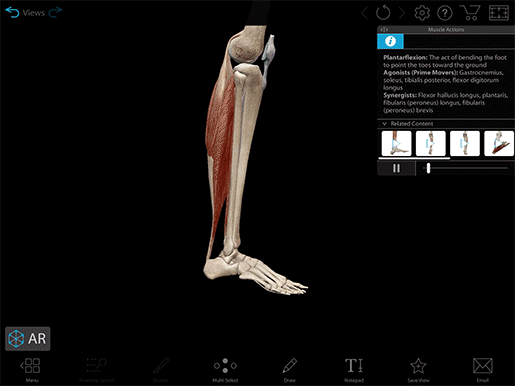
Muscle action in VB Suite.
When she was a member of the faculty of Health Sciences at the university, she taught a large, asynchronous, online course. A mandatory core course, each class held over 1,000 students from a variety of backgrounds, experience levels, and career aspirations. The classes were broken down into 28 lab sections who met weekly for hands-on learning, incorporating the university’s supply of plastic anatomy models. With this setup, students struggled to stay interested.
“I was finding that students were just not engaged in the content at all, and their motivation was very low. The plastic models really do require intrinsic motivation. Even if I pulled apart the muscles for them and created guided worksheets for them—nobody cared. They would come in and they wouldn't touch a single model. Truthfully, they were really struggling when it came to assessments,” Dr. Wood said.
She began working with biology professor Dr. Paul Mensink to find an online, accessible tool that would appeal to different student populations with augmented reality (AR) functionality. They wanted to find something they could incorporate into the online classes and in-person lab sessions, and VB Suite fit the bill.
"We were looking at Visible Body and one other software, but what sold it was Visible Body's support. [Managing Sales Director Kara Kindstrom] has been with me from the very beginning, and she's been absolutely amazing. That was what made us choose Visible Body—you guys seemed really keen to make this happen,” said Dr. Wood.
Plastic models meet 3D learning
From the start, Dr. Wood knew that she wanted to conduct a study with Visible Body. By taking a methodical approach and conducting student surveys, she could better understand student needs and the effectiveness of her own teaching.
After a small pilot study of 50 students during a summer session, Dr. Wood was ready to test drive Visible Body with 1,000 of her students that fall.
Lab sections were grouped together: some groups exclusively used VB Suite, some exclusively used plastic models, and others used combinations of the two. Each group was stratified to ensure that, for example, all the nursing students didn’t end up in one group.
For the study, students worked through a Tour and a guided lab activity to explore trunk and lower limb anatomy.
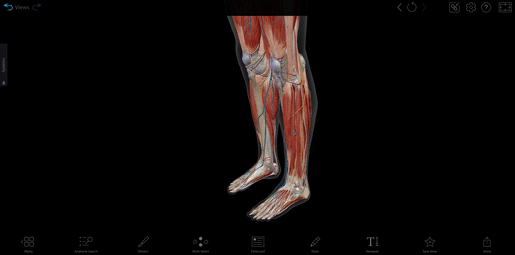 GIF from VB Suite.
GIF from VB Suite.
For groups that used both VB Suite and the plastic models, the Visible Body team and Dr. Wood put together QR codes to place on the models and the lab tables. That meant that students could scan the QR code on a plastic model and be brought to the muscle in VB Suite.
"The QR codes on the tables and the muscles helped them make the connection between the modalities," Dr. Wood explained.
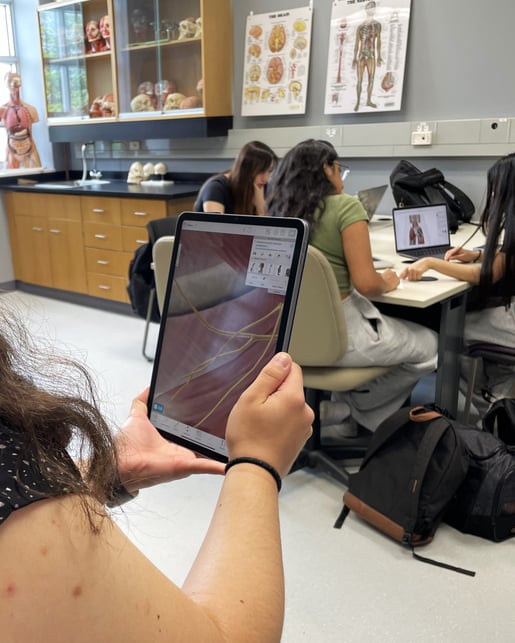
Dr. Wood's students use VB Suite in conjunction with plastic models to learn lower limb and trunk anatomy.
When they were done, all students completed a survey which included a series of statements using a Likert scale and an optional section for written qualitative responses.
Student engagement with VB Suite
Dr. Wood received over 1,000 survey responses, almost half of which included written responses.
Overall, students had a very positive experience using VB Suite, and Dr. Wood found that her students preferred using VB Suite in conjunction with the plastic models.
"Plastic models aren't inherently bad, but they do provide some insecurity in the content, and they require a minimum amount of knowledge that was becoming a barrier for students in terms of engagement and interactivity,” explained Dr. Wood.
Dr. Wood found that her VB Suite offered a lower barrier to entry when it came to understanding the content—because VB Suite clearly labels structures, students had less room for error and could more confidently use the tool. On the other hand, when only using plastic models, students were unsure of themselves when identifying structures.
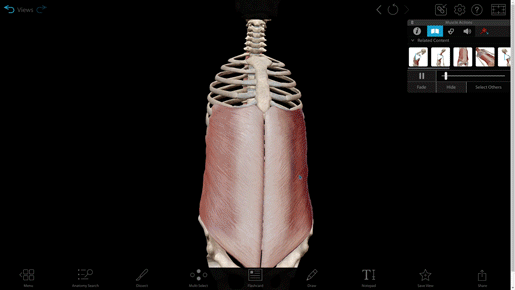
Muscle action in VB Suite.
Students who used VB Suite showed:
- Improved attention to the task
- Improved confidence in the material
- Improved motivation and engagement
Students saw some advantages to using VB Suite over plastic models. For one, the plastic models didn’t show the deep back muscles, so VB Suite was helpful for filling in the blanks.
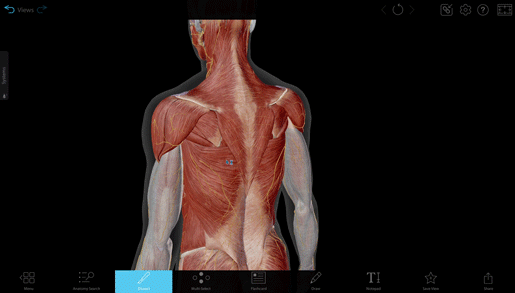
Using the Dissect tool to reveal deep back muscles in VB Suite.
"One of the things that students really loved is they were able to see flexion or abduction—they could see those muscles actually moving, which is something you don't get from plastic models,” said Dr. Wood.
Dr. Wood also noted some student preferences when using the app:
- AR initially grabbed students’ interest, but when it came to completing activities, they preferred to use VB Suite without AR.
- When completing lab activities alongside the VB Suite mobile app, students preferred using a larger screen like a tablet, but they liked the portability involved in the mobile app.
- For students, Flashcards were a standout feature in VB Suite. Making flashcards is a popular study method, and using the VB Suite visuals was appealing to students.
Ultimately, students got the most value out of getting hands-on with plastic models while using VB Suite—making the combination a great match for learning.
Improving anatomy education
The study has inspired Dr. Wood to incorporate new methods into her teaching. For example, she wants to include a Flashcard or Tour creation assignment in a future iteration of the course.
She’s interested in incorporating VB Suite into more courses—her next project is using cadaver-based images in conjunction with VB Suite to determine if it helps students succeed on practical exams. She is also investigating group size—using plastic models is a group experience, and in the study, students were paired up when using VB Suite, but what is the ideal group size for working with VB Suite?
Here at Visible Body, we’re looking forward to Dr. Wood’s future research and learning more about the tools and teaching methods that make an A&P course successful!
Be sure to subscribe to the Visible Body Blog for more anatomy awesomeness!
Are you an instructor? We have award-winning 3D products and resources for your anatomy and physiology course! Learn more here.



